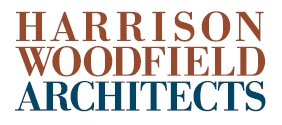The Tubbs Fire was a destructive wildfire in Northern California during October 2017. At the time, the Tubbs Fire was the most destructive wildfire in California history, burning parts of Napa, Sonoma, and Lake counties, inflicting its greatest losses in the city of Santa Rosa.
It incinerated more than 5,643 structures, half of which were homes in Santa Rosa. Santa Rosa’s economic loss from the Tubbs Fire was estimated at $1.2 billion, with five percent of the city’s housing stock destroyed.
Santa Rosa Architect, Sara Woodfield, was a first-hand witness to the destruction.
“The architecture and building fields have had a greater awakening in recent years amid California’s run of deadly and destructive fires,” said Woodfield in a recent public outreach via area newspapers, The Santa Rosa “Press Democrat” and the “San Francisco Chronicle.”
“This has brought fire into the mainstream conversation,” she said. “Even though we know these rules and we’ve been following them, and been fire-aware, never have we had this many buildings burn. It took everybody by surprise.”
“This has brought fire into the mainstream conversation,” she said. “Even though we know these rules and we’ve been following them, and been fire-aware, never have we had this many buildings burn. It took everybody by surprise.”
“So, we have to be even more vigilant, both in forest management and in the way we build houses. I think the industry is responding well and we are doing it smarter and stronger and I think we have a better chance of controlling the damage. We can’t always control the fire, but we can control the loss of life and the damage much better.”
Harrison Woodfield Architects has been among those architects advising home owners how to incorporate designs that will safeguard their homes.
“Building codes now require us to be safer, with the types of materials and the way the buildings are sealed so fire doesn’t get sucked in and start to burn from the inside,” said the firm’s architect Sara Harrison Woodfield. “We design roof vents so that they won’t allow flames inside. The building materials themselves have to be more fire resistant. There’s stucco, or cement fiber siding.”
Other measures she likes to incorporate to protect buildings include keeping rock near the bottom of the building and ending the siding eight inches above the rock, making it harder for burning debris blown up against the building to catch fire.
Many of the homes impacted by wildfire in California are built in what’s called the “wildland-urban interface,” meaning they butt up against open space overgrown with foliage that fuels fires. As many as 5 million homes in the state are located within this interface, and nearly 200 communities housing 3 million people have been designated as “very high fire hazard severity zones,” by the California Department of Forestry and Fire Protection. The state has guidelines for building within these more fire-susceptible areas, and they’re becoming increasingly strict.
“You have to use materials that offer at least one-hour of fire resistance,” says architect Harrison Woodfield. “No trellises that easily catch on fire. No vents that allow embers into the attic.”
But while homeowners in certain areas are now required to build more smartly, some are going above and beyond to use designs and materials that can resist flames for far more than one hour. For high-risk zones, Woodfield also prefers designs that use what’s known as solid wall construction, with insulated concrete forms that are less prone to catching fire.
“I personally like solid wall construction or other things that are sturdier against fire,” she said. “There’s no wood in the walls to burn if a fire comes through, the building won’t be destroyed. The structure will stand.”
That doesn’t mean it’s safe to shelter in such a building during a fire, she added, noting that extreme heat can blow out windows, giving entry to outside flames. She also noted that most local contractors are more comfortable doing wood framing than using concrete-based designs.
Woodfield says many clients are choosing what she calls “solid wall construction” instead of traditional wood framing for a higher-category of fire resistance.
“There are many products allowing a solid wall, with concrete on the inside and foam insulation on the outside,” says Woodfield, who has been working as an architect in the region for 30 years. “It’s a form of foam, with concrete inside and stucco or siding outside. There’s nothing to burn. It’s almost fireproof.”
“This is just one option. Another is with foam panels within steel grids and as the panels are installed, concrete is blown on them.” She says a company called Tridipanel makes these and they’re fire resistant for up to four hours, or more.
“I know for a fact one of these Tridipanel houses was in the Lake County Fire [2015],” says Woodfield. “They didn’t lose anything except some windows.”
While no structure is completely immune to wildfires, using the design expertise of an Architect like Harrison Woodfield can be the difference between a home to return to after a wildfire and a tragic pile of ashes.
Learn more about architectural design to defend homes subject to wildfires at The Santa Rosa “Press Democrat” and the “San Francisco Chronicle.
